Jun 21 2016
OTW Waterfall
Monday – rest day. Too much work to do to fit in a session without compromising other duties.
Tuesday – first training of the last two intensive weeks of the season. This week and coming week I should get in a decent amount of training, then I will drastically reduce volume, only work on speed and prepare for the Masters Nationals.
Driving to the rowing club, I thought that this may be the last “long intervals” session of the season, but I was mistaken. I have actually planned two of them for next week. I think I should revise that, even though it is straight out of the book.

You can also see that I should have done a 1 minute and a 2 speed lactate test last week. Well, I was in Amsterdam and I didn’t do the tests. Not critical in this period of the year, I think. I don’t need confidence on the erg. I need boat speed and ability to battle through the lactate rush.
I will be taking Thursday and Friday off, so I should take some time to plan the rest of the season in detail.
I was also wondering about the pace. Had I looked at previous sessions, I would have discovered a 4x2km OTW in 2:12 average in April. During breakfast, I searched my blog but didn’t find it. Now, behind the desktop, I found it immediately. So far for web browsing on the smart phone.
I decided to go at 24spm for the 3k, 25spm for the 2.5k, and 26spm for the 2k, work on technique and be happy with an average pace faster than 2:13 (head race pace). These are ideal stroke rates and boat speeds to ingrain my technique attention points. A long reach at the catch, not locking the boat and a strong finish. By not locking the boat I also make time to pay attention to blade depth. Also, the first part of the stroke should be a leg push, followed by a distinct back swing. Please note that these are my personal notes, and I am exaggerating what I need to do in order to come closer to the ideal, which I would definitely not describe as a stroke that consists of two distinct pieces, bum shove, back swing. But as always when you work on technique, you have the feeling you exaggerate. It feels awkward and you have to work hard to achieve even the slightest improvement. Shifting the emphasis a bit more to the back swing makes me finish much stronger than I normally do, which has a distinct effect on boat speed. Today, paces were jumping around a bit on CrewNerd depending on the XGPS160 mood, the wind, the moon phase, and a few other unknown factors, but I had the feeling that I could bring down the splits by 2 seconds by doing a strong finish.
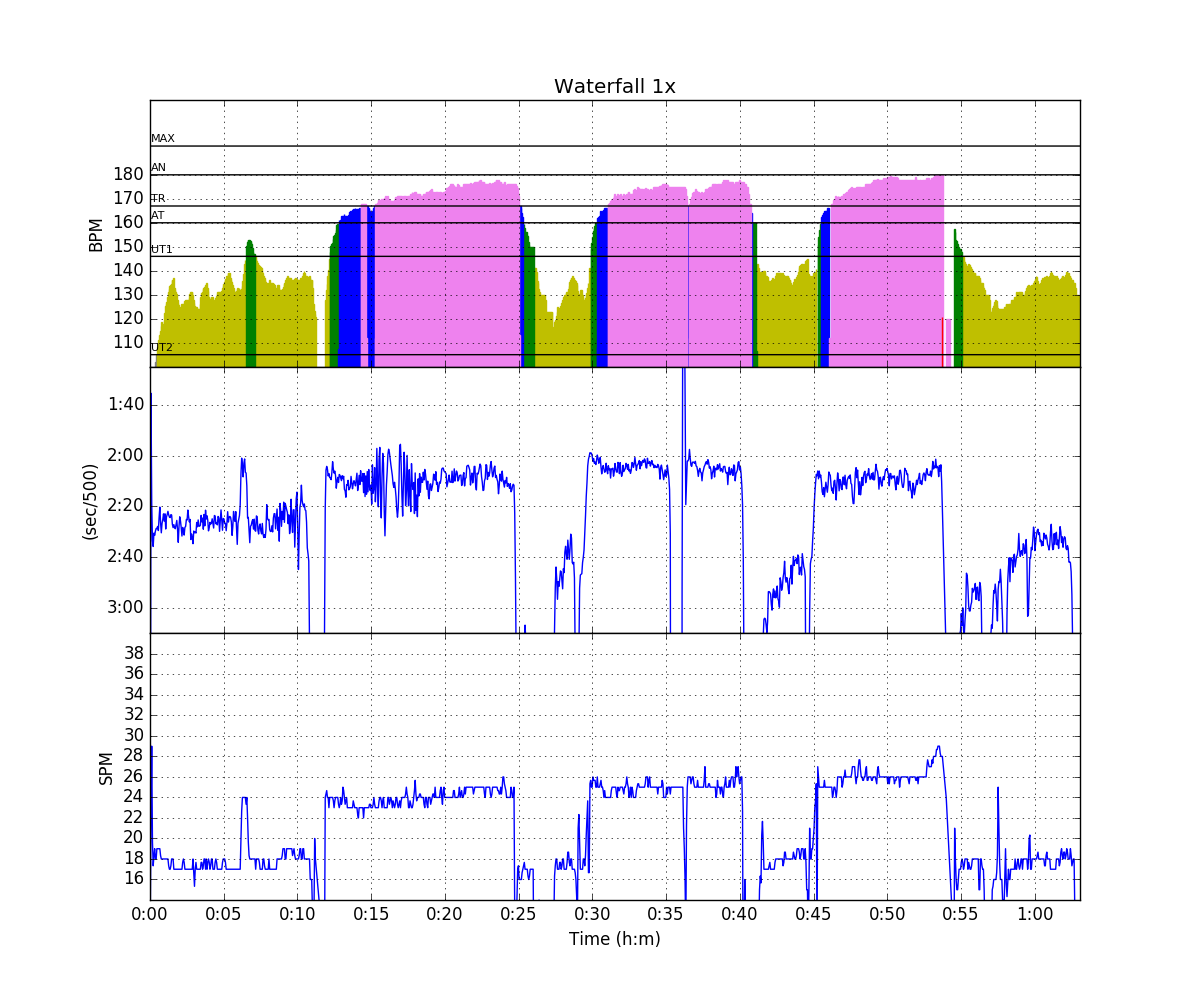
Workout Summary - media/20160621-092013-2016-06-21-0712.CSV
--|Total|-Total-|--Avg--|Avg-|-Avg-|-Max-|-Avg
--|Dist-|-Time--|-Pace--|SPM-|-HR--|-HR--|-DPS
--|11169|51:51.0|02:19.7|22.3|156.6|169.6|09.7
Workout Details
#-|SDist|-Split-|-SPace-|SPM-|AvgHR|MaxHR|DPS-
01|02266| 11:15 |02:27.6|18.3|131.0|153.0|11.1
02|03000| 12:54 |02:09.1|24.5|170.0|178.0|09.5
03|02500| 10:27 |02:05.5|25.3|172.0|178.0|09.4 - interrupted
04|02000| 08:36 |02:09.0|26.6|175.0|181.0|08.7
05|01403| 08:39 |03:00.3|16.8|135.0|158.0|09.9
During the warming up, I saw very flattering paces. The water was mirror flat and I didn’t realize that I was rowing in a slight tailwind breeze. Then I turned around at Rokle to start the 3k, and after the first strokes I immediately noticed I was rowing into a headwind. It is funny how you don’t notice with tailwind, then you turn around and you notice the temperature feels slightly lower, there is a cool pressure against your back and neck, and your paces drop. Anyway, I managed to hold 2:09 in this 3k without much problems. Rowing without a mirror, I almost bumped into one of the big tourist boats which was doing a turning maneuver in the final 500m of the 2k course. I only noticed it was there when I finished the interval and looked around. It was 10 strokes away from me.
Must wear mirrors, even in early morning sessions.
During the second interval I counted 5×50 strokes and enjoyed nice paces. At one point the CrewNerd+XGPS160 combo froze. I don’t know how long it took me to notice. I guess a few strokes. I stopped rowing, reset the XGPS160 and picked up again. No negative impact on training effect, but you can see the interruption in the graph.
During the final interval I climbed a bit in stroke rates in the last 500m. Good session overall.
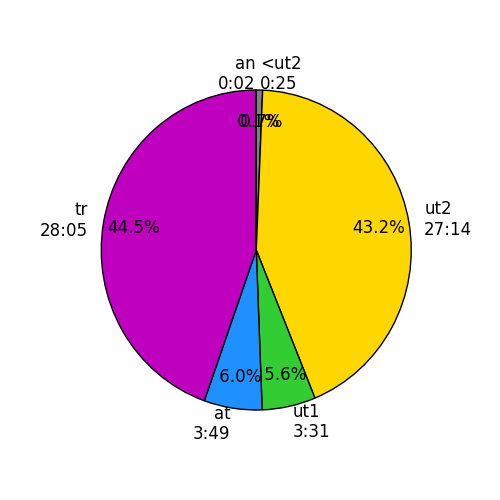
It’s funny the pie chart doesn’t show any “red”. If you zoom into the Interactive Chart on rowsandall.com (here), you can see a tiny bit of red in the last interval:

Tomorrow: Extensive steady state
Thursday: Two sessions, one with 3x(6×45″/1min) Rest intervals, which I am thinking of changing to what our elite guys were doing today: 4×1’15″/1’15” + 5×45″/1′.
After the training I chatted a bit with our elite lightweight sculler, Milan, who has good chances of going to Rotterdam in the LW 1x, for the World Championships for non-Olympic rowing disciplines. We also discussed the differences between Wintech (which he used to row) and Filippi (to which he recently switched). I hope he will qualify for Rotterdam!
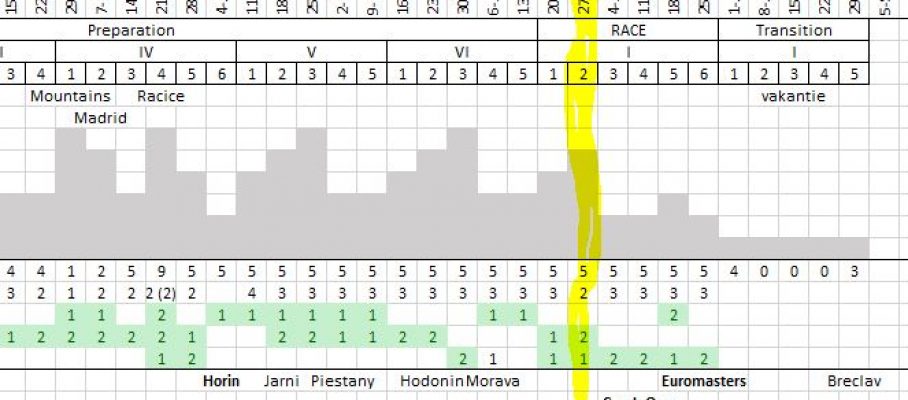
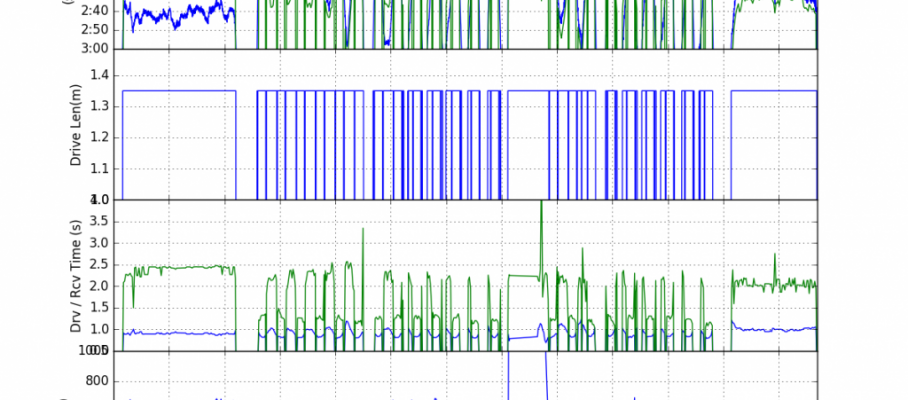
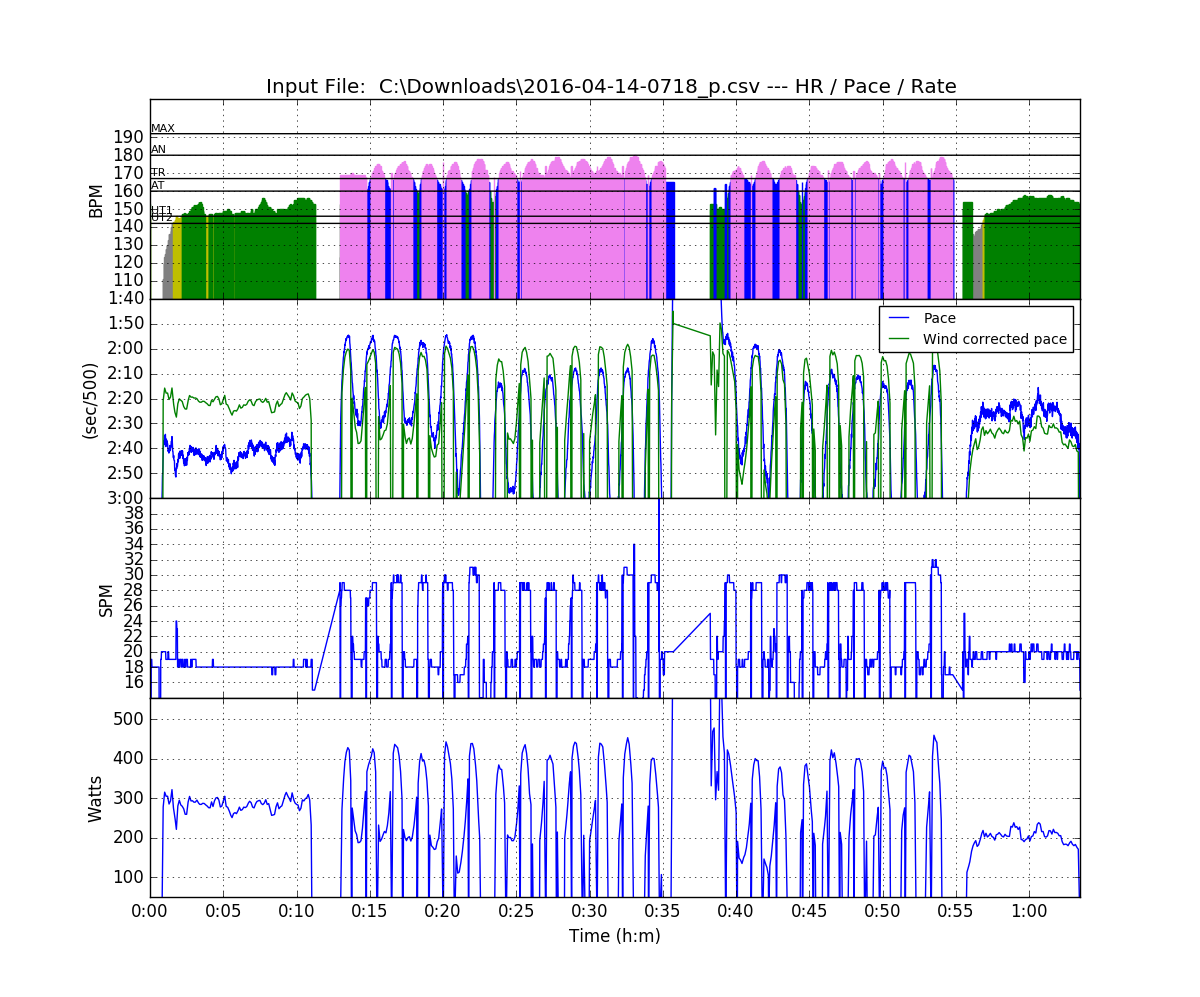
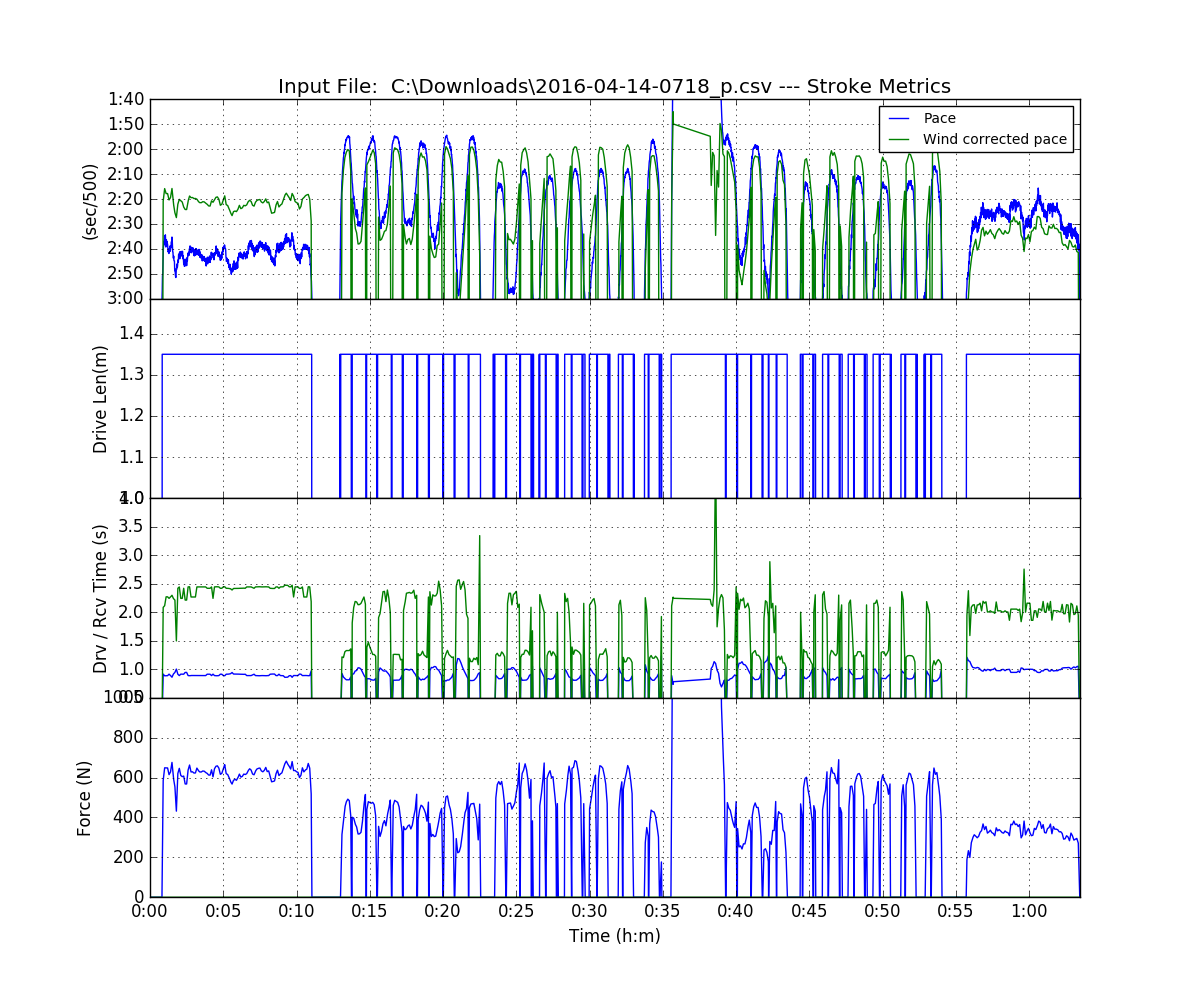
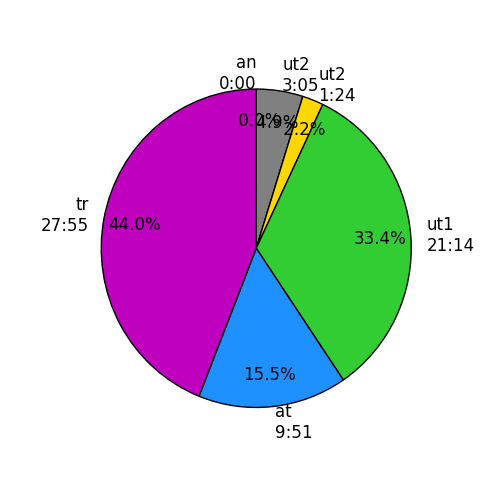
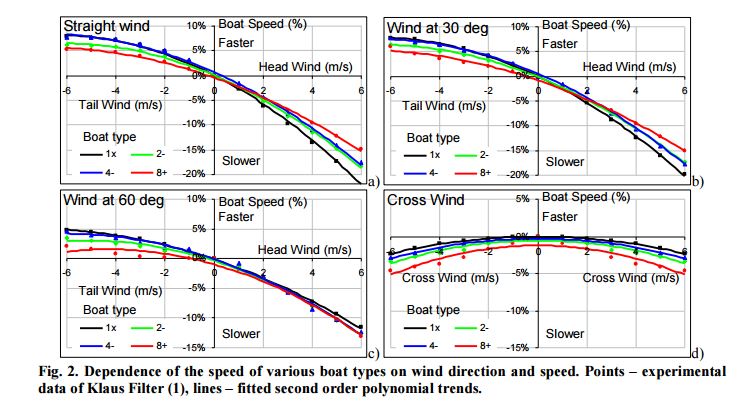
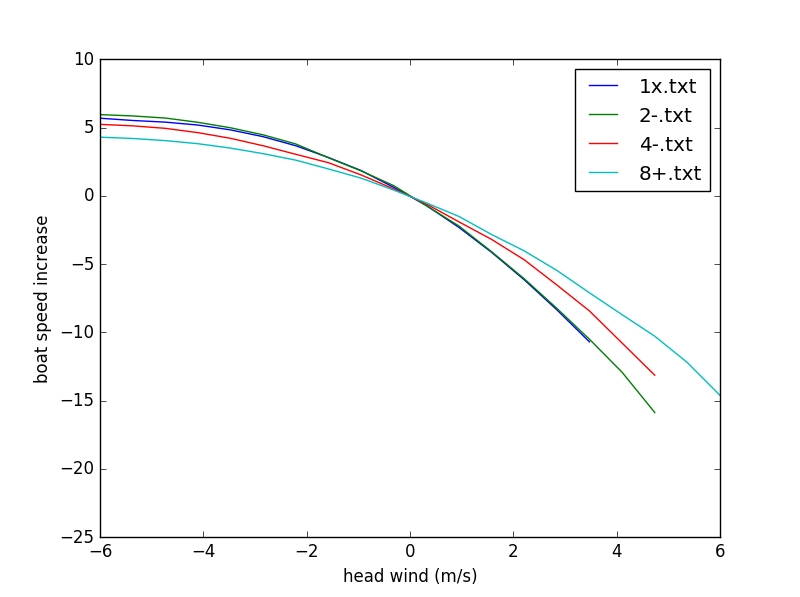
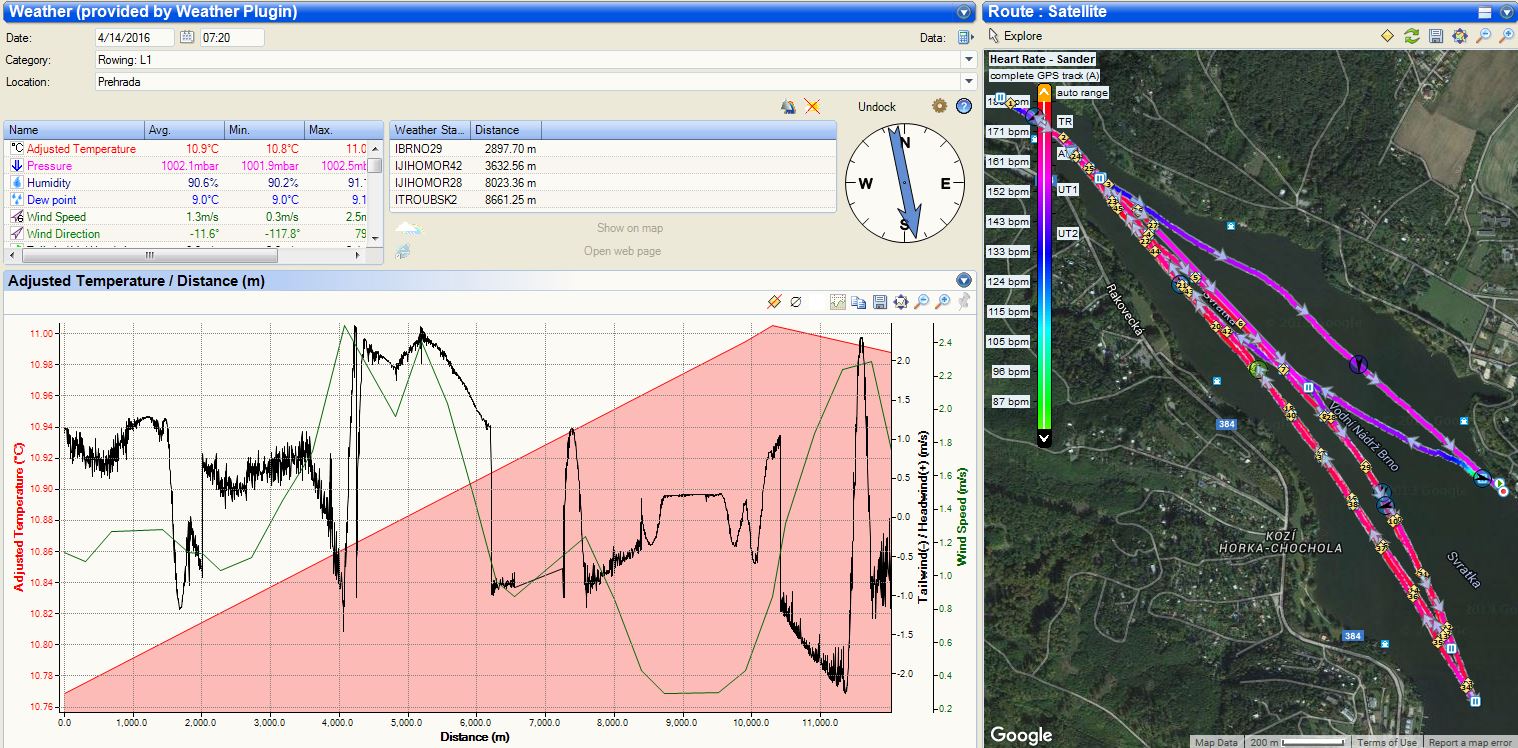
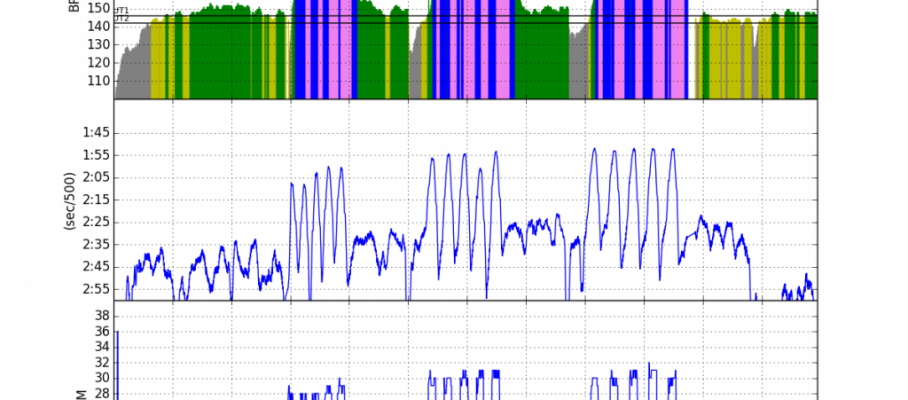
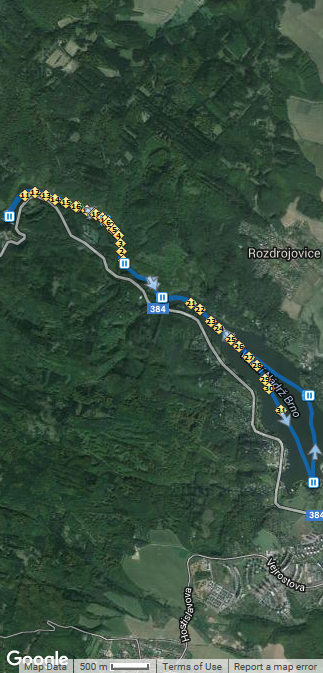
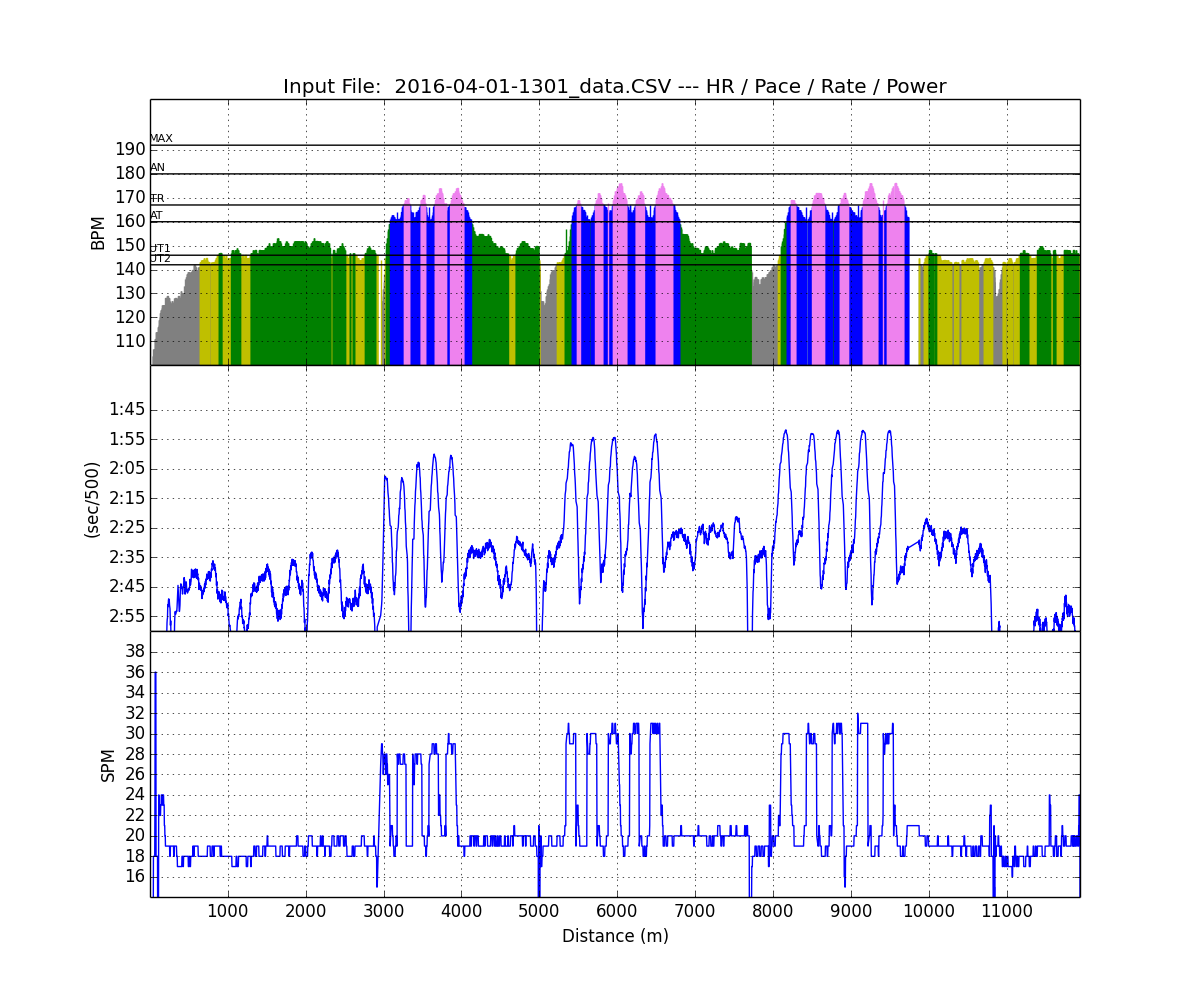
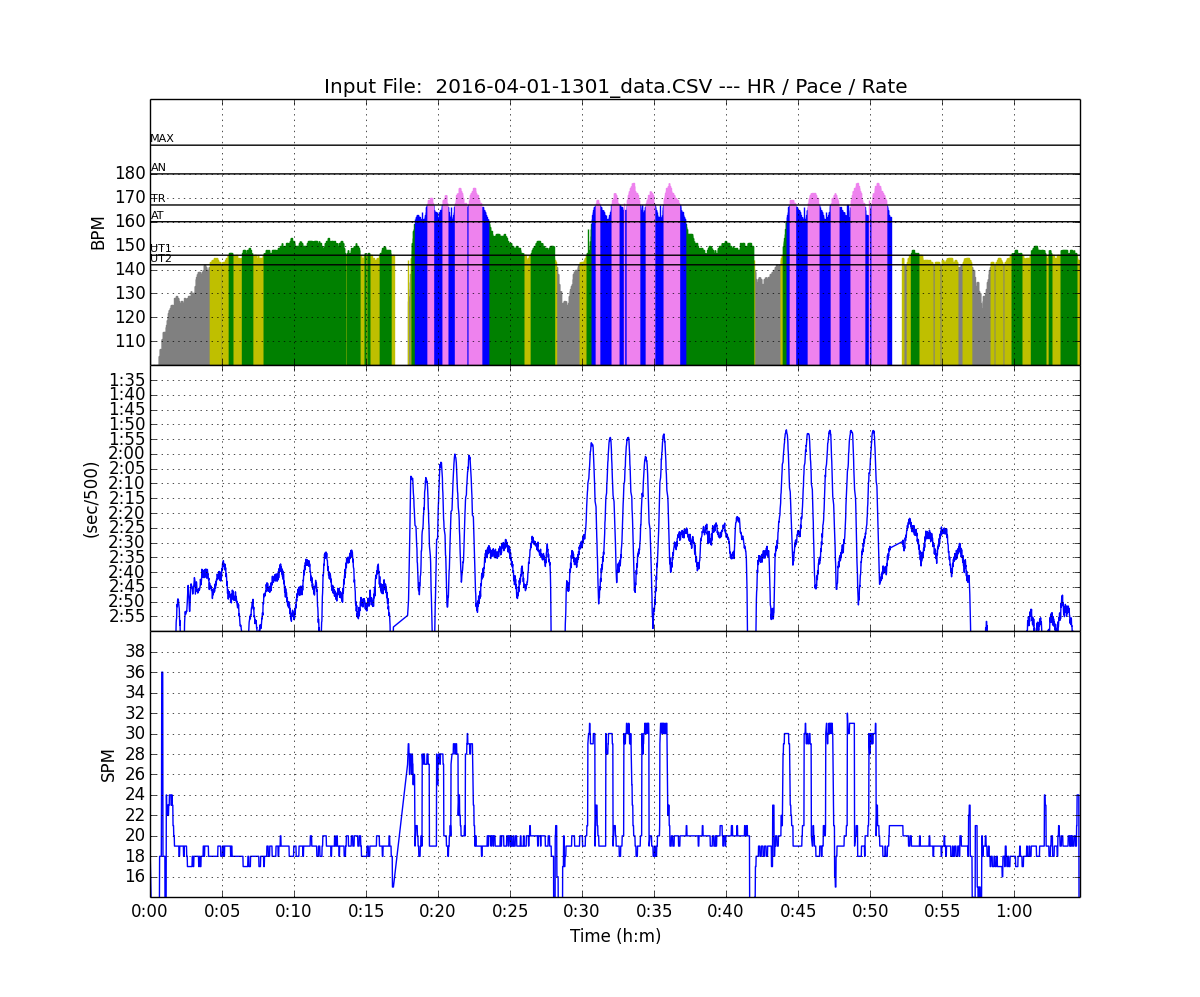
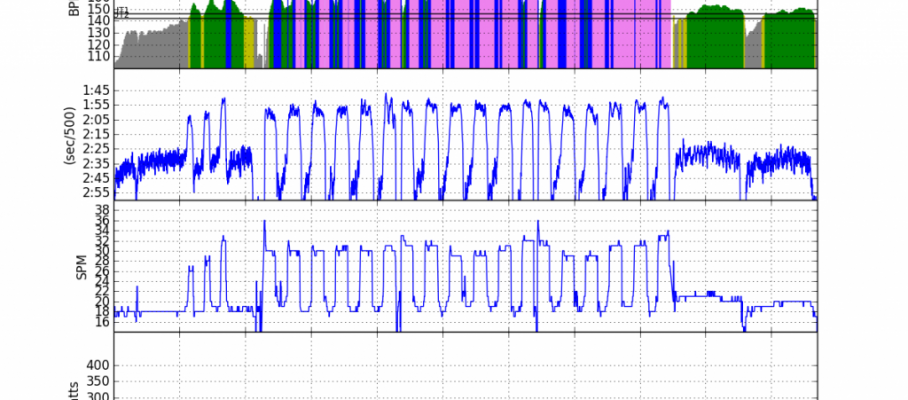
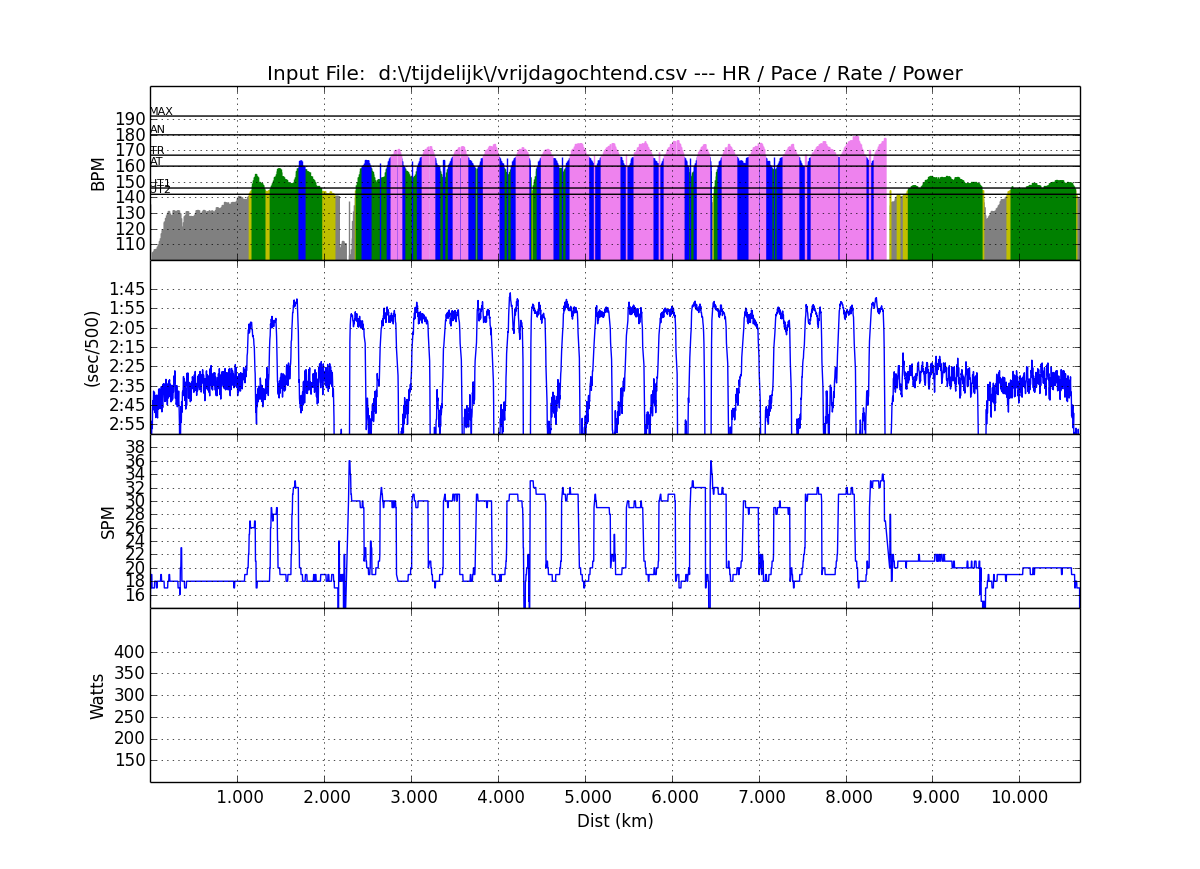





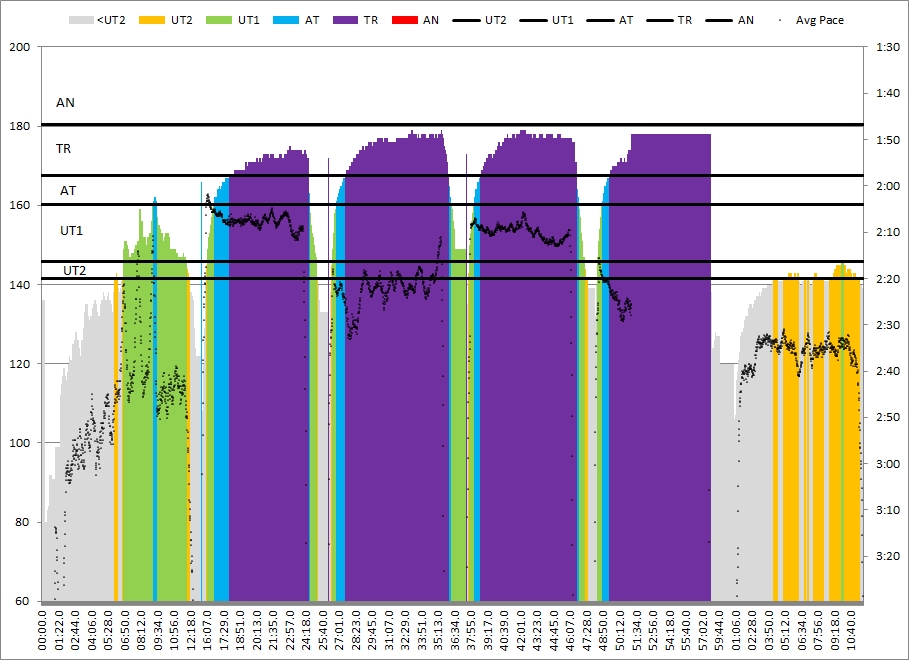
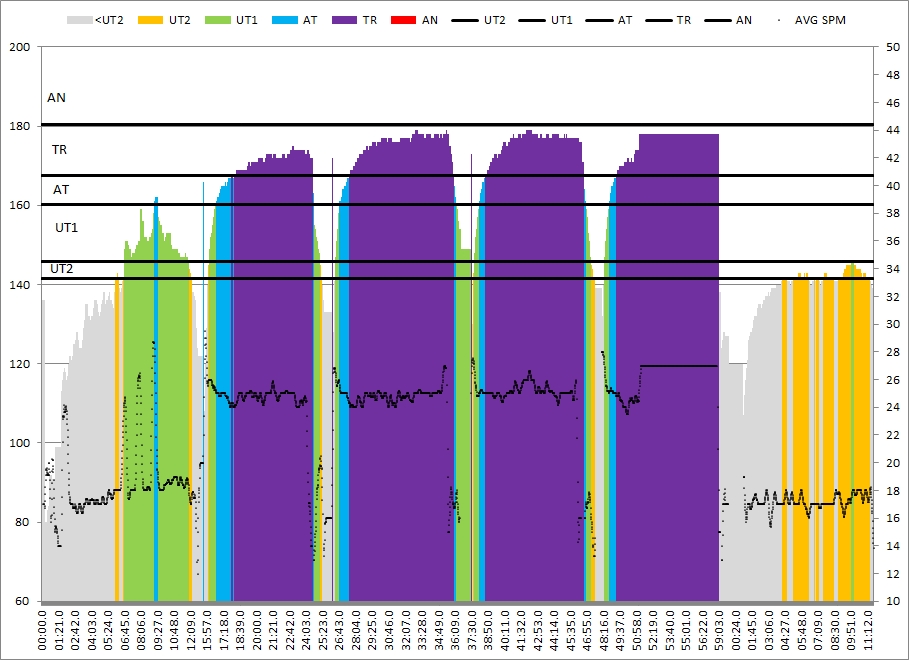
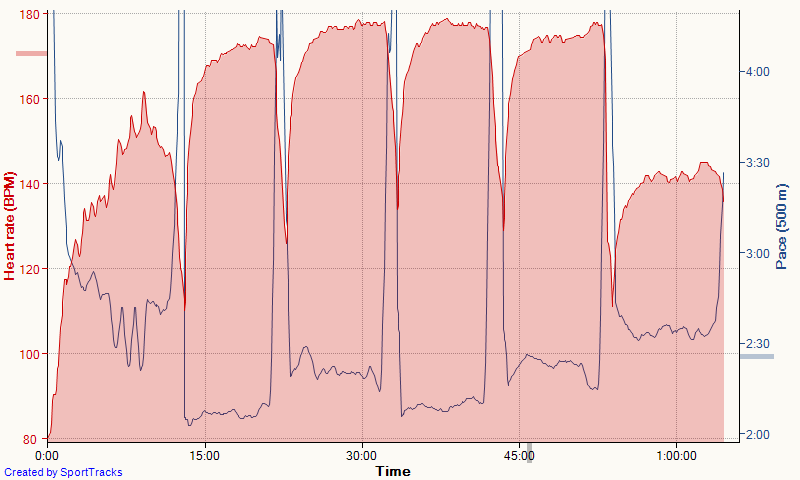
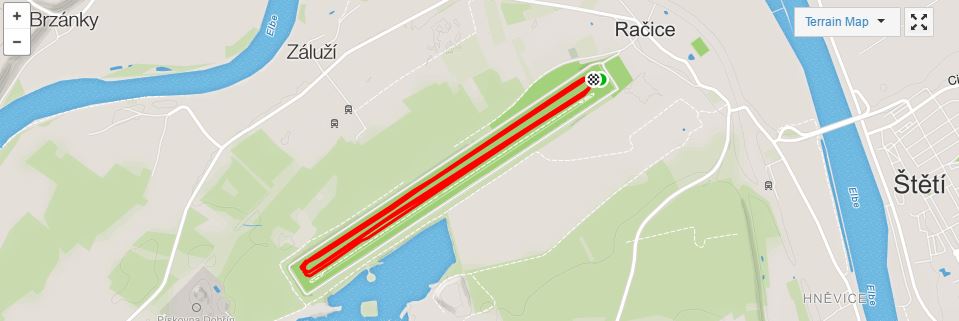
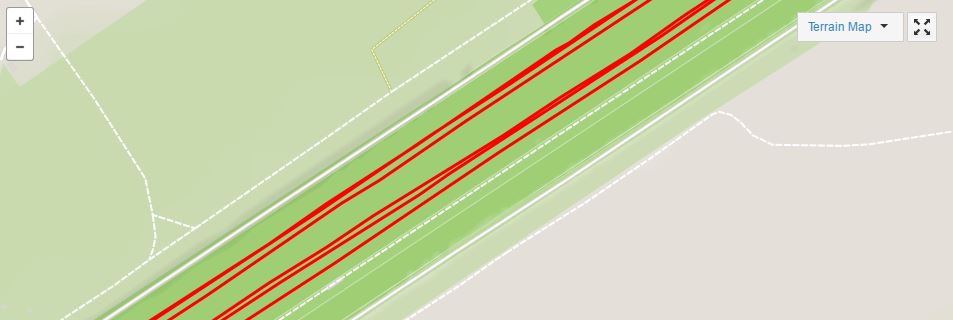
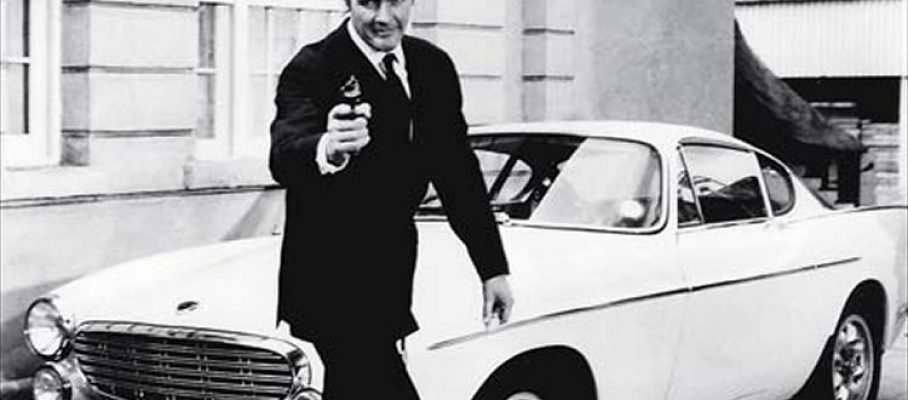

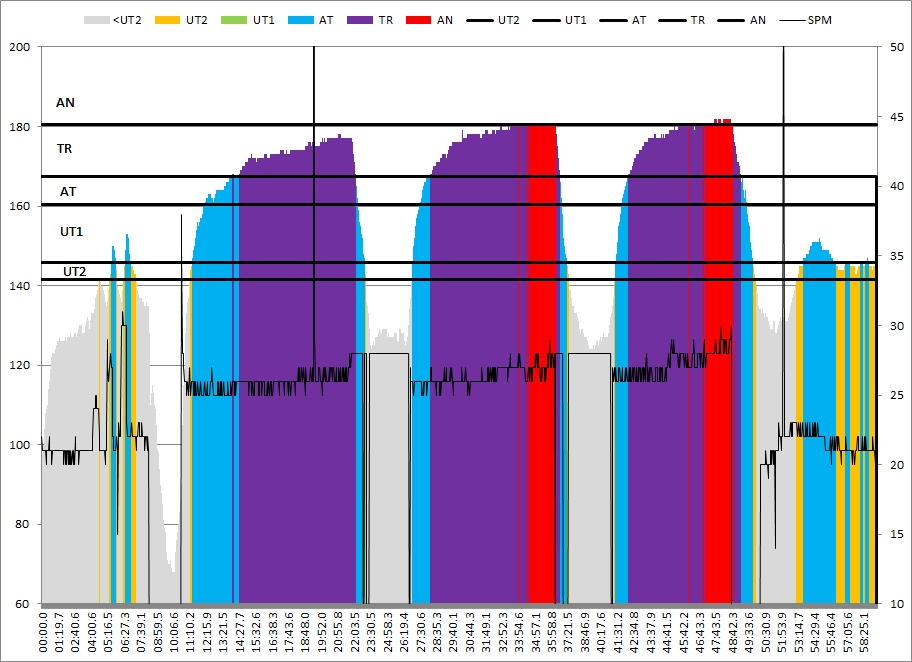
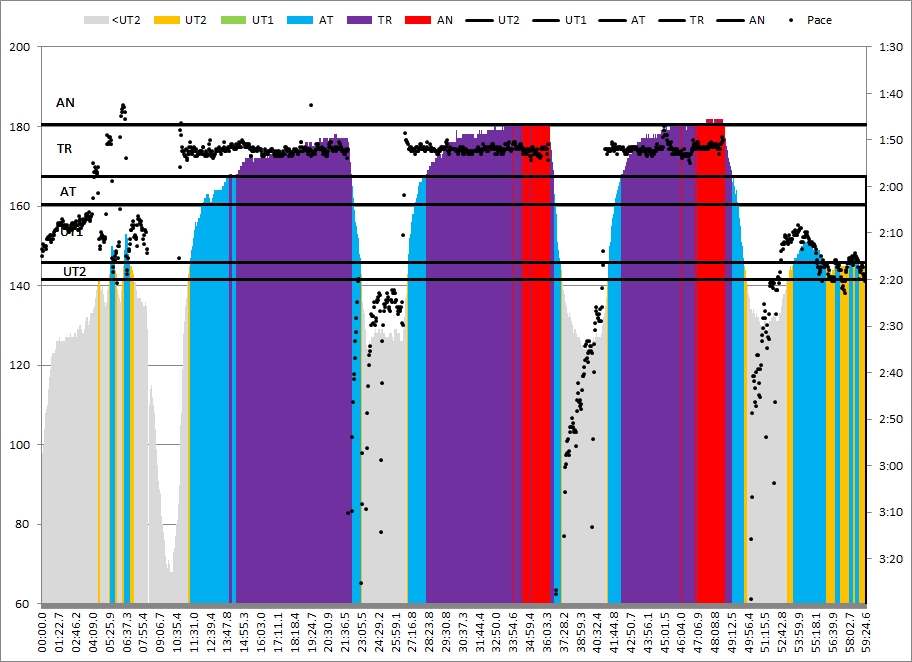
Jan 10 2017
January CTC: 4x4min/4min rest
I have taken it easy last week, even though it was supposed to be a hard week. Too much sniffing and sneezing going on to do any hard workouts.
So, today was the first real hard workout in ages. I chose to do the CTC. It is somewhere in between the shorter stuff I have been doing before Christmas and the “long intervals” that I am supposed to do in this mesocycle of my training plan.
Row 4 times 4 minutes with 4 minutes rest between reps
Use the same damper setting for all reps.
Record your distance for the sixteen minutes of rowing.
Don’t include any resting metres.
The first 4 minutes must be a standing start. All others can be standing or rolling starts.
In the 2k warming up I did a few 10 stroke sprints at slightly faster paces than I normally do them. Then I set up the 4x4min.
I was warned that it would be a tough workout, so I set myself a target to row 28spm and higher, a “light” stroke and watch stroke length and technique.
Every interval was the almost same, except that they got slightly harder each time. The first minute flew by and I would have thoughts of doing a fast interval at 1:46. The second minute was slightly harder. The third minute was endless and I was struggling to keep 1:48. The light at the end of the tunnel got me through the fourth minute.
Today, the graphs from Rowsandall.com are very interesting. First, the summary plot:
and the summary:
Workout Summary - media/20170110-195135-sled_2017-01-10T19-42-09ZGMT+1.strokes.csv
--|Total|-Total-|--Avg--|-Avg-|Avg-|-Avg-|-Max-|-Avg
--|Dist-|-Time--|-Pace--|-Pwr-|SPM-|-HR--|-HR--|-DPS
--|06613|32:00.0|02:25.2|212.1|25.3|158.0|177.0|08.2
W-|04466|16:00.0|01:47.5|281.5|27.8|167.5|177.0|10.1
R-|02149|16:00.0|03:43.4|074.1|20.7|144.9|177.0|01.3
Workout Details
#-|SDist|-Split-|-SPace-|-Pwr-|SPM-|AvgHR|MaxHR|DPS-
00|01114|04:00.0|01:47.7|279.0|27.1|162.9|173.0|10.3
01|01120|04:00.0|01:47.1|284.4|27.9|169.5|177.0|10.0
02|01117|04:00.0|01:47.4|282.3|28.0|169.1|177.0|10.0
03|01115|04:00.0|01:47.6|280.4|28.1|168.5|177.0|09.9
And here are the interesting plots:
There is a lot of things going on here (at least in my perception).
I was wondering if this is due to the peak force or the average force. Guess what? There is a chart for that:
After a few months of spending some of my free time on rowsandall.com, I have something that is really useful, at least for myself. I use painsled to record the data. I get them onto rowsandall.com. I have set of “favorite” charts defined that I browse through. Rest paddling is automatically filtered out, and the result is a set of data that give me a quick overview of what I did, and some observations that are hard to get without a coach sitting next to and observing you.
The temperature in my rowing basement was +1.5C. Outside temperature -8C.
By sanderroosendaal • Uncategorized • 4 • Tags: concept2, ctc, erg, intervals, OTE, rowing, training